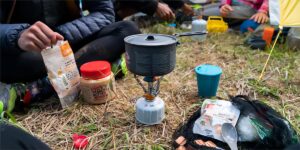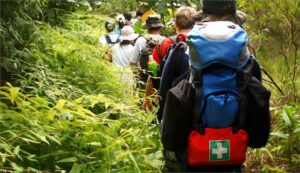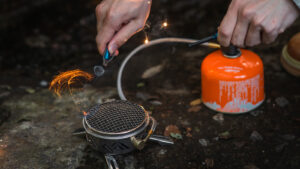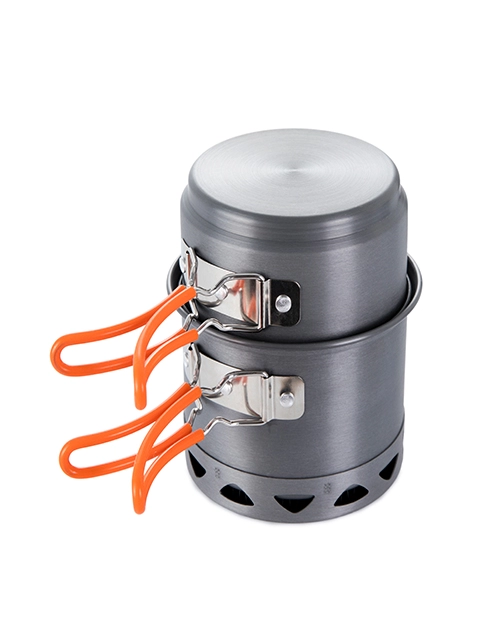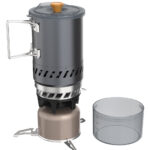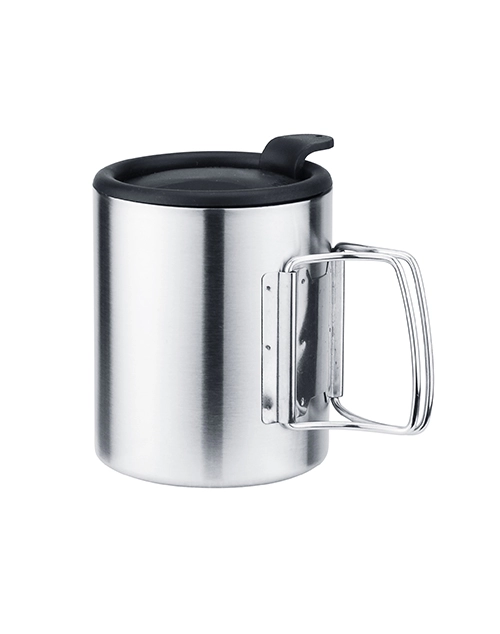
Food and Water
Food and water are the foundations of your trek; they nourish your body and keep your spirit going while you go across difficult terrain. Consider lightweight, nutrient-dense foods that will give you consistent energy while on your walk. Carbohydrates, proteins, and lipids all play special roles in muscle regeneration, energy production, and general health. Water is the elixir of life, and it should not be disregarded. Maintaining appropriate hydration is critical, particularly during activity and sweating. It can cause dizziness, exhaustion, and other serious repercussions, therefore always carry a water bottle with a backup and plenty of water.
Shelter and Warmth
When creating a survival bag, it is also crucial to include goods that provide weather protection and assist regulate body temperature. Lightweight and small tents, as well as sleeping bags, can keep you warm on chilly evenings while also providing a safe and pleasant resting environment. A thermal emergency blanket or camping bag can also be used as a lightweight and portable backup alternative.
First Aid
On any trek, safety comes first, and a well-stocked first aid kit is your hiking guardian angel. That is why you should always have a full first aid kit with you on your hiking trips. Consider your first aid pack to be your emergency preparedness kit. It protects against minor cuts, scratches, blisters, and more serious injuries that may require rapid care. Adhesive bandages, disinfectant wipes, tweezers, and pain medications are all essential components of a well-prepared survival pack. Tailor your survival gear to the details of your walk, taking into account aspects such as group size, environment, and whether you’ll be hiking for a day or longer. Review and replenish your survival kit to ensure that the contents are still in excellent shape and within expiration dates.
Navigation and Communication
Having the capacity to navigate and communicate effectively is critical for enhancing your chances of survival and rescue in unpredictable or emergency situations. Compass, maps, a GPS device, or a dependable portable navigation system are all useful navigation equipment. In addition, signalling items such as a whistle or signal mirror can assist draw attention in an emergency scenario. Communication gadgets, like as a fully charged mobile phone and a portable charger, allow you to connect with rescuers or other survivors, improving your capacity to seek help and coordinate your activities more efficiently.
Portable Power Station
Incorporating a portable power station into your camping survival kit is a wise and practical decision, as it provides several advantages that may greatly improve your outdoor experience. It guarantees that you have access to electricity for your phone, navigation, illumination, medical requirements, entertainment, and other purposes. With this multifunctional equipment by your side, you may enjoy your outdoor experiences while also being prepared for any survival circumstance. Also, consider taking a solar charger to keep your phone from running out of energy.
Clothing and Protection
Carrying appropriate gear can help you avoid the consequences of severe weather and risky circumstances. It can provide thermal insulation, weather protection, and adaptability. Remember to include personal protective items including hats, sunglasses, sunscreen, and bug repellent. Carrying safety gear like helmets, gloves, and goggles can also help you stay safe.
Personal Documents and Cash
Gather your personal identity documents, such as a copy of your passport, driver’s license, and any necessary permits or licenses. In addition, gather important documents such as birth certificates, insurance information, medical records, and emergency contact information. It is recommended to keep a supply of small denomination currency on hand, as access to ATMs and electronic payment systems may be limited in an emergency. To keep these documents and cash safe, place them in a secure, waterproof container or bag.
Organizing and Packing Tips
- Make a Checklist
Make a complete inventory of important goods depending on your unique requirements and the length of your anticipated use. This will help you keep organized and avoid forgetting any important materials.
- Categorize and Prioritize
Divide your things into categories to make it simpler to find them fast when required. Prioritize essentials such as water, food, and first aid supplies, and have them conveniently accessible in case of an emergency.
- Waterproof and Seal
Protect your resources from dampness by storing them in waterproof backpacks or bags. This step is critical for keeping your food, electronics, and other delicate things dry and operational in damp or uncertain weather conditions.
- Practice Compactness
To save space, use compression sacks or vacuum-sealed bags for clothing and other soft objects.
- Remember Some Rules of Survival
Familiarize yourself with essential survival guidelines, such as the Rule of Threes, which emphasizes the critical priorities in a survival situation. You can survive for around three minutes without air, three hours without shelter under tough conditions, three days without water, and three weeks without food. Keep these guidelines in mind while you organize and pack your survival bag.
- Regular Inspection and Maintenance
To ensure that everything works properly, examine and repair your survival bag regularly. Replace expired food, update documentation, and restock any things that have been used or expired.
Final Thoughts
Having a well-prepared survival bag is an important step in improving your emergency preparedness and ensuring your safety in hard conditions. Now you should understand how to load your survival bag. Following these organizing and packing suggestions, as well as remembering crucial survival laws like the Rule of Threes, can ensure that you have a well-stocked and neatly packed survival bag. Remember to examine and refresh your supplies on a regular basis to ensure they are still current and in excellent condition.
ODM service
Looking for reliable wholesale outdoor equipment? At Deermaple, we specialize in ODM service, offering high-quality and innovative gear tailored to your needs.
If you are interested in outdoor gear wholesale, please contact us.

